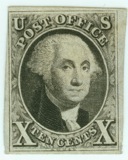by John Edwards
9th of August 2009
In 1911 Calbraith Perry Rodgers, aged 32, decided to take part in a competition to fly an airplane across the United States within a period of thirty days. The publisher William Randolph Hearst was offering a prize of $50,000 for the first person to achieve this feat.
Rodgers persuaded J Ogden Armour of the Armour Meat-Packing Co to sponsor his attempt and named his plane the Vin Fiz Flyer after Armour’s new grape soft drink called ‘Vin Fiz’.
Rodgers was the grandson of naval hero Oliver Hazard Perry of the Battle of Lake Erie in the War of 1812. Rodgers had taken about ninety minutes of flying instruction from Orville Wright in June 1911 at the Wright School in Dayton before flying solo, and had won an air endurance prize in August worth $11,000. He was the first private citizen to purchase a Wright airplane – the modified Wright Model B, called the Model EX (for experimental).
|
Orville Wright |
It was a long-wing biplane made from lightweight material: a spruce airframe covered with canvas, and a small 35 horsepower engine. The plane had two push-propellers driven by a chain-drive transmission and could fly at 45 to 60 miles per hour. The airplane had no instruments, other than a reported shoelace to show vertical and lateral inclination of the airplane.
His sponsor, Armour, agreed to pay Rodgers three to five dollars for every mile flown, hence his persistence against all the odds to complete the flight from the Atlantic to the Pacific. He collected $23,000 for the miles he flew.
Armour also provided a three-car support train called the Vin Fiz Special to follow the Vin Fiz Flyer. Aboard were his wife, Mabel, his mother and other family members, together with mechanics, reporters and employees of Armour and Vin Fiz. The train carried supplies, fuel, repair parts, spare engines, and one car was fitted out as a repair shop.
|
Rodgers, preparing to set off from Sheepshead Bay.
|
The flight presented an enormous challenge perhaps not appreciated in modern times. There were no airports or air navigational aids; no control towers or beacons to warn pilots of hazards to avoid, and of course no contact with the ground once in the air. Rodgers would have to navigate by recognised landmarks, following railway tracks or rivers where these lead him in the right direction, and sometimes fly by pure guesswork.
Rodgers’ flight began at 4.30pm on 17 September 1911 from Sheepshead Bay, New York. A large number of stops were planned across America. In fact there were about seventy stops with at least sixteen of these being crashes. Rodgers was injured many times, some crashes putting him into hospital, and the Vin Fiz Flyer was repaired several times and rebuilt at least twice. Only a few pieces of the original plane actually made it to the end of the flight.
Rodgers landed at Pasadena, California on 5 November in front of a crowd of 20,000, missing the deadline for the prize by 19 days. To complete the flight across America he took off again on 12 November for Long Beach, California, but was forced down twice and broke his ankle. On 10 December he finally landed on the beach and taxied the Flyer into the Pacific to complete the journey across America of over 4,000 miles in 84 days. Although he had missed the time limit for the competition by 54 days he had achieved the first flight across America from coast to coast.
|
The Vin Fiz Flyer’s final crash into the Pacific Ocean. |
Rodger’s wife privately issued the famous Vin Fiz 25c black stamp for the flight, and acted as unofficial postmistress during her husband’s journey. This stamp has become a US Air Post rarity with twelve copies known to exist, seven on postcards, one on cover and four stamps off cover. One of the cards was sold in 1999 for $88,000. It is thought that the stamps were ordered by Rodgers’ brother, Robert S Rodgers, from a printer in Kansas City, Missouri, and were available from about 14 October 1911.
The Post Office tolerated the use of these stamps on items carried by the airplane provided they were correctly stamped for the postal service with regular US postage stamps. All known copies of the ‘Vin Fiz’ stamp are imperforate and closely trimmed to one or more sides. Dated examples are from 19 October to 8 November. The stamp is catalogued by Scott (#CL2), though the logic for including this and not other semi-official airmails defeats me. However, this epic flight deserves a permanent memorial, and what better memorial than the famous stamp.
|
Left. The poster produced by Vin Fiz to publicise the flight. It shows the route across America.
Tragically Rodgers died about five months later when flying in Long Beach. His plane was hit by a bird, he crashed and broke his neck. |


